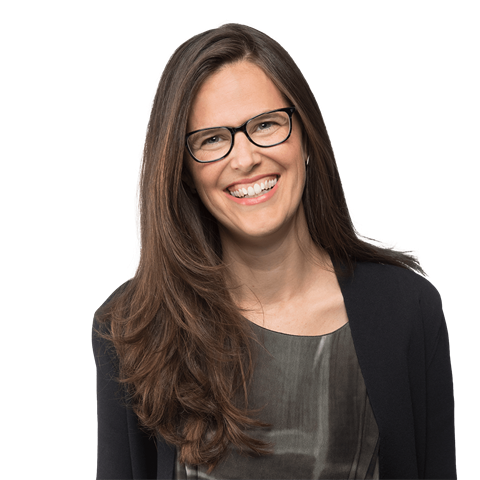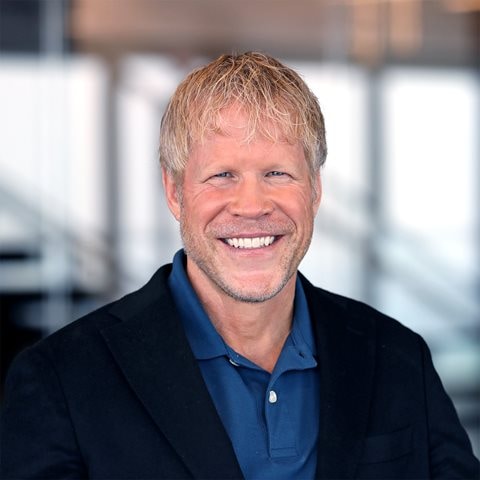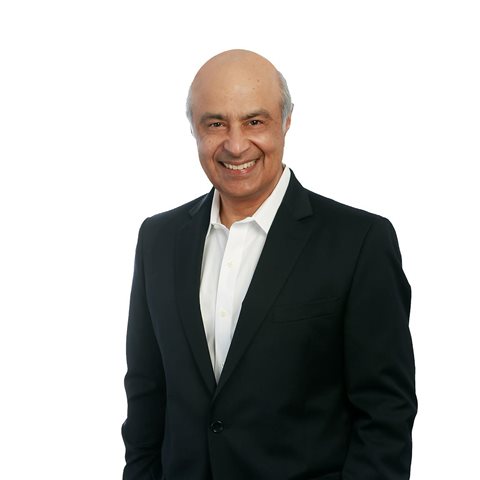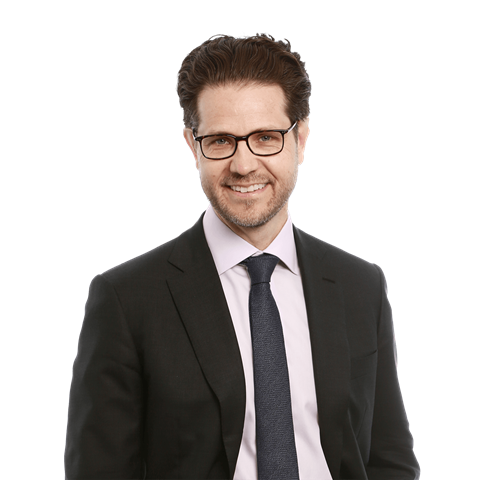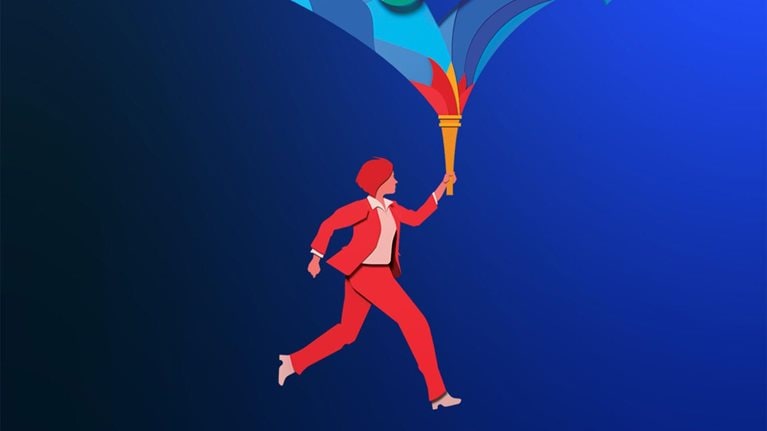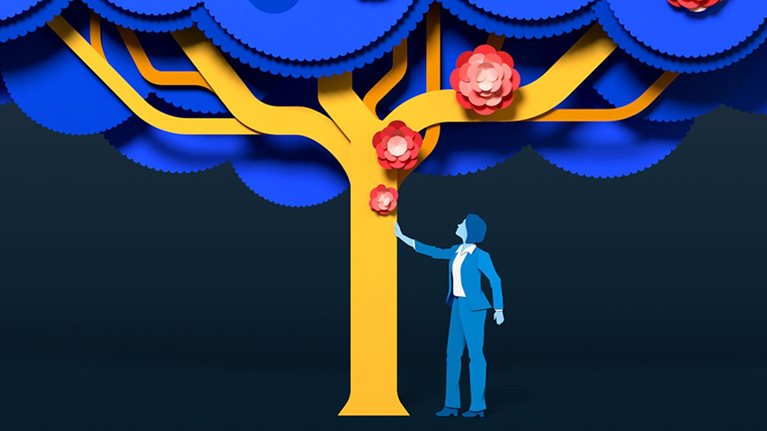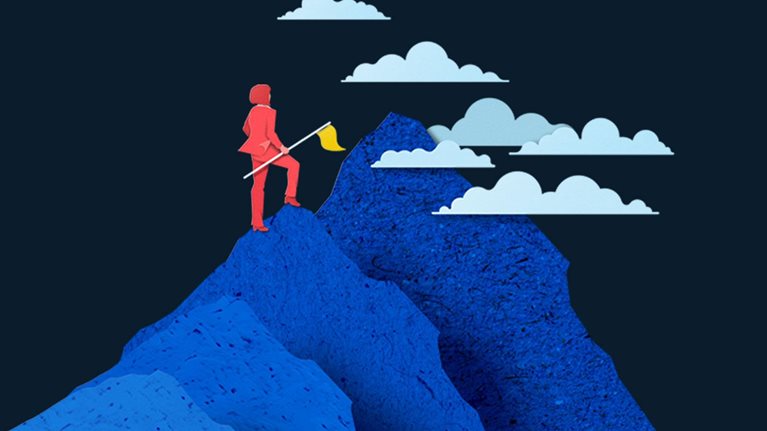Success breeds complacency, complacency breeds failure.
Most people know the fable The Tortoise and the Hare. In the story, the two animals challenge one another to a race to prove who is faster. The hare starts strong and is soon out of sight. Midrace, the hare lies down to rest, feeling certain that it’s going to win. After a time, the tortoise plods past the place where the hare is sleeping peacefully. By the time the hare wakes up, it’s too late to overtake the tortoise, despite its best efforts.
The tale originated with the Greek storyteller Aesop, who makes use of humble incidents to teach great truths. But could such a simple story be relevant to today’s CEOs, who face far more menacing challenges than a slow and steady tortoise? After all, the reality that they encounter is more akin to being chased by world-class drivers in state-of-the-art Formula One cars on a track full of unexpected turns, multiple surfaces, and unpredictable weather.
The answer is a clear “yes” if you’re a CEO who started strong and are now riding high three to five years into your tenure. You did all the right things early in your role: set a bold vision, pursued a short list of big strategic moves, put the right talent and accountability mechanisms in place, gained the trust of your stakeholders, and focused your time on what mattered. As a result, you’ve created significant value on your watch. Your peers in other organizations who didn’t get as strong a start are at worst being ousted from the role and at best struggling with the dreaded “hockey stick” syndrome, where a CEO who forecasts outsize improvements finds, over time, that little progress has occurred and that the desired uplift remains elusive.
On one hand, this is exactly where you hoped you would be; congratulations. On the other hand, as Aesop’s fable warns, you’re about to face your toughest challenge yet: complacency. Said another way, becoming a successful CEO is hard, but staying successful is even harder. Research confirms this challenge: more than half of the companies on the Fortune 500 list in the year 2000 went bankrupt, were acquired, or ceased to exist in the following 15 years.1
It’s during this middle stretch of your CEO tenure that the concentration and energy you applied to your objectives during your first years on the job are most likely to dissipate and fragment. Intellectually, the danger of such complacency is a simple concept to grasp. No one wants to be the prize fighter who wins the title belt, goes soft, and unceremoniously loses it to a hungrier up-and-comer or to be the band whose single goes platinum, only to become known as a one-hit wonder down the road. We’ve never met a CEO who told us, “Yep, I’m becoming complacent.” But we’ve met plenty who suddenly recognize that complacency has set in when they see a proverbial tortoise ahead of them.
Take one of the most respected, influential, and successful CEOs of the 21st century: Jamie Dimon of JPMorgan Chase. During his early tenure, he deftly navigated the financial-services behemoth through the global financial crisis of 2008, and a year later, he was named to audit firm Brendan Wood International’s TopGun CEOs.2 Fast-forward to 2012, however, and Dimon was facing a crisis after his company got hit with a trading loss of approximately $6 billion. When asked what went wrong, Dimon confessed, “The big lesson I learned: don’t get complacent, despite a successful track record.”3
The reason this happens can be more emotional than intellectual. In the middle years of your CEO journey, you’re now the author of the organization’s status quo. It’s your plan. This makes it far more difficult for you to judge the business dispassionately and to disrupt what’s working. Also, with more success comes an increased confidence in your judgement. “The problem with being a CEO a long time,” says James Gorman, CEO of Morgan Stanley, “is everybody tells you that you have all the answers. It’s comforting to your ego but very dangerous.”4
Like everything about the CEO role, the dynamics at play are as much about the institution as they are about you. When traditional competition is fading in the rearview mirror and emerging competitors are gathering their forces, it becomes increasingly difficult to define what winning looks like. Meanwhile, that license you had early on to shake things up has long expired, and your employees have become comfortable working in the new ways you introduced. Unless you’re again the prime mover of change, the organization will become complacent.
So how do CEOs avoid complacency and sustain high performance through the middle years of the role? We don’t pretend to have a magic formula, but from our continued research and experience in the field of CEO excellence, we’re confident the odds are greatly increased by the following:
- enhancing your learning agenda
- taking an outsider’s perspective
- collaboratively defining the next S-curve
- future-proofing the organization
Enhance your learning agenda
In the early years of being a CEO, you learned an extraordinary amount. The conversations you had with customers, employees, investors, analysts, board members, and other stakeholders helped you shape the strategy that’s led to the success you’re enjoying today. Now you’re flooded with requests to tell your story and share your wisdom with others. While these requests are well earned, Flemming Ørnskov, CEO of the Swiss pharmaceutical company Galderma, describes the dangers that lurk beneath. “There are so many distractions,” he says.5 “You can win prizes; you can get accolades. Which [are] all good. But the main job you have is to do better every year than you did the year before.”
The point isn’t to pull back from external engagement. It’s to make sure that you’re spending time listening, learning, and connecting dots versus talking about your successes. In Ørnskov’s case, his success early on allowed him to delegate more responsibility to his team, which meant he could actually spend more time outside the company—but only on things that would help the business stay competitive. “I knew all the key opinion leaders,” he shares. “I spent an enormous amount of time on understanding what was going on, seeing patients, meeting doctors, going to scientific conferences to get the latest in research, and studying our competitors’ activations on the ground.”
The time Ørnskov spent learning paid off: “The inspiration for at least two or three deals we did came from doctors I got to know who said to me, ‘You should really think about this thing,’ ‘I’m involved in this product development,’ or ‘I’ve seen patients in this clinical trial.’” Similarly, Greg Case, the CEO of global professional-services firm Aon, uses client conversations to pick up new product development ideas—risk products for cybersecurity and for intellectual property theft being two examples. Case explains his philosophy: “You, of course, interact with clients to serve them, but you also interact with them to understand how you want to change.” For former LEGO CEO Jørgen Vig Knudstorp, an unlikely group of customers was instrumental: the adult fan community. “They were viewed as a gray market and a little bit of a fringe group,” he shares. He joined them for one of their conferences and gained their trust, and they helped him see what was possible. LEGO’s adult customers now total more than one million people globally and account for 30 percent of LEGO’s global business.
Feike Sijbesma, former CEO of DSM, similarly found inspiration from his external networks. “I started traveling a lot and building a network, connecting with a lot of people in business, science, and society,” he shares, “to combine the [seemingly] unrelated things into something new.” He gained conviction from visits with industry experts, including in the Middle East, that DSM would never be able to compete with the major global oil and chemical companies. At the same time, through his involvement with the United Nations, among other organizations, he realized that opportunities were emerging in a whole new area of sustainable development and healthy food. “That’s how we got the idea to move out of petrochemicals and use the proceeds to move to nutrition and health,” he reveals.
Investors can be another important source of new ideas. Ken Powell, former CEO at global food company General Mills, recalls, “I spent a lot of time with our top shareholders. There were, of course, some who wanted a quick hit, but [there were] others who were very constructive and had a long history of really understanding the industry. I got a lot of energy from those conversations. And that helped refine or reinforce our thinking.” Dupont CEO Ed Breen goes a step further. “I engage with the activists,” he shares. “If you listen, they often have good ideas. I agreed with 80 percent of what they wrote in their white papers, and what I didn’t agree with was how to go about fixing the problem. Their view is, ‘If Ed has a better way to fix it, good. Go do it.’ They just want it fixed. With that approach, I’ve found they often become your ally.”
Breen also advises CEOs to join one or two groups where they can get together off the record with other CEOs and talk through key topics. “You learn a lot from hearing what people are seeing in their markets, and it’s on a level that goes deeper than what you read in the Wall Street Journal,” says Breen. “I still meet with groups like this now. I always walk away with six or seven new ideas.” Along similar lines, Brad Smith, former CEO of financial-software giant Intuit, shadowed leaders in other companies such as Amazon, Facebook, and Google once a quarter. “I told them I just wanted to be a fly on the wall; this is not a trade show,” he says. He would take notes throughout the day, share his observations at the end of it, and then write up a report on what he learned to share with his colleagues at Intuit. “They called it ‘Uncle Brad’s book report: Here’s what I learned,’” shares Smith. Many successful CEOs periodically take their teams along on such visits to learn from other organizations.
Drawing on practices from other industries can be powerful. For example, former Nestlé CEO Peter Brabeck-Letmathe had a revelation when he learned how Disney, as it began to conceive each animated film, was already thinking about how to make the most of that film over the next ten years. “So instead of creating just one ingredient for one product, which has limited value,” shares Brabeck-Letmathe, “I was thinking about how to transform a nutritional ingredient into a brand and how to exploit it over the next ten years. . . . People make things and do things in different ways, and you always can learn something and apply it in your own organization.”
Learning doesn’t just come from the outside. As Intuit’s Smith shares, “I had two meetings a week with people many levels down in the organization and with eight to ten people in each group. To all, I posed three questions: ‘What’s getting better than it was six months ago? What’s not making enough progress or going in the wrong direction? And what’s something you’re afraid no one is telling me that you believe I need to know?’ It was incredible, because you skip levels and go right to the front lines of the area you’re trying to learn about. You cut everybody else out and eliminate the filter.”

CEO Excellence
The six mindsets that distinguish the best leaders from the rest.
Take an outsider’s perspective
In one of Nobel Prize–winning psychologist Daniel Kahneman’s experiments, a grocery store put Campbell Soup products on sale for 79 cents with a sign above the display that read “limit 12 per customer.”6 Another grocery store ran the same sale but with no purchase limit. On average, how many cans were purchased per customer in the first store? Seven. And in the other store? Roughly three.
What’s going on here, and why is this relevant? The experiment shows the power of what is called an “anchoring heuristic.” A heuristic is essentially a mental shortcut or rule of thumb the brain uses to simplify complex decisions—also known as a cognitive bias. An anchor is a piece of information that someone relies on to make a decision. In the supermarket experiment, shoppers’ brains anchored on the purchase limit of 12 and adjusted downward. Those who bought only three cans of soups didn’t have the number 12 in mind, so they made what might be considered a more normal-size purchase, or one adjusting upward from zero.
Now let’s apply this learning to the way many CEOs traditionally approach their strategy. Each year they refresh their strategy based on the prior year’s assumptions: what still holds and what doesn’t. By contrast, the best CEOs periodically do thorough analyses of all aspects of their businesses in the same way that they did when they took the role, as though they were coming in from the outside with fresh eyes. They’re not wed to the past, encumbered by internal loyalties, or willing to bow to short-term pressures.
Can an incumbent really act as boldly as an outsider? Yes. In the early 1980s when Intel’s profits plummeted from $198 million one year to $2 million the next, then-president Andy Grove asked Gordon Moore, Intel’s CEO at the time, what Moore thought would happen “if we got kicked out and the board brought in a new CEO.”7 Moore responded that a new CEO would get the company out of memory chips. Grove stared at him and asked, “Why shouldn’t you and I walk out the door, come back, and do it ourselves?” The rest is history, as Intel moved away from dynamic random-access memory chips and staked its future on a new product: the microprocessor. In doing so, it helped usher in a run of success for the company that lasted for decades.
The methods by which CEOs take a true outsider’s view vary, but virtually all are grounded in asking for factual answers to a holistic set of questions:
- Capital markets:
- What has driven our historic shareholder returns over various time horizons?
- How does our valuation stack up to peers’ today, and why?
- What are the highest-impact levers to change our valuation (growth, margin improvement rates, etcetera)?
- Strategy:
- Are we in the right businesses, geographies, sectors, product lines, and customer segments?
- How can we strengthen our competitive advantage in these chosen areas?
- What are our highest-potential M&A, partnership, and divestment opportunities?
- Commercial:
- What are our opportunities for revenue growth (volume and pricing)?
- What is the current profitability of each area we choose to play in, and what is the potential?
- What are customers saying and competitors doing by channel, segment, and product?
- Cost and capital:
- Where do we have direct and indirect cost improvement opportunities?
- How can we substantially enhance the ROI of our capital expenditures?
- How can we make our capital structure more resilient?
- Organization:
- What radical improvements can be made to communication and engagement?
- How can we enhance our execution capacity and speed (for example, through structure, incentives, and review cadence)?
- Where do we need to refresh talent and our talent proposition, and where do we need to build new capability?
- Reputation:
- What is our impact on the environment, and how can it be improved?
- How do we perform on social topics (for example, diversity, well-being, and community involvement)?
- How strong is our governance model?
Those in the private equity world will recognize that pursuing clinical answers to these questions is taking a page out of their playbook. In that world, an asset is reassessed every two or three years, and bold actions are taken accordingly. The idea is to view a company through the eyes of theoretical new owners looking to form a new investment thesis and, in doing so, acknowledge that both the company and the external environment will have changed meaningfully since the previous investment thesis was formed. It also encourages important voices of dissent to “speak truth to power” where needed. This thought process is helpful in any organization. “You have to reinvent yourself. The world changes. You have to change,” former Itaú Unibanco CEO Roberto Setúbal advises.
Successful CEOs also look for an outsider’s perspective on their leadership style. This involves a clinical assessment that solicits feedback from a broad range of stakeholders. The results can be game changing. “In year six of my 11-year journey,” Intuit’s Smith explains, “my 360° feedback came back with, ‘Brad is lowering the standards in the company because he’s being too kind in reviews and isn’t willing to call anybody out. He has this philosophy of praise in public and coach in private. But it’s robbing the rest of us of knowing where his standard of quality really is.’” Knowing the company needed him to be different, Smith changed his approach. “I challenged myself to be kind to the person but tough on the issue, and everyone in the company knew it,” he says. “I told people, ‘Keep me true to this if you don’t think I’m being concrete enough about whether the work is good enough. But I also want you to know that I’m not embarrassing people.’”
Collaboratively define the next S-curve
Between three and five years into their tenure, the best CEOs typically combine what they’ve gained from their expanded learning agenda and their self-directed outsider’s perspective to form a point of view on what the next performance S-curve is for their company. The concept of the S-curve is that, with any strategy, there’s a period of slow initial progress as the strategy is formed and initiatives are launched. That is followed by a rapid ascent from the cumulative effect of initiatives coming to fruition and then by a plateau where the value of the portfolio of strategic initiatives has largely been captured. Dominic Barton, McKinsey’s former global managing partner, describes why managing a series of S-curves is important: “No one likes change, so you need to create a rhythm of change. Think of it as applying ‘heart paddles’ to the organization.”
Former Best Buy CEO Hubert Joly describes why and how he applied heart paddles to his organization, moving from one S-curve to another: “We started with a turnaround, something we called ‘Renew Blue.’ There came a point where it became apparent we should declare the turnaround over.” At that point, Joly felt Best Buy was ready to move into a growth phase, which he dubbed, “Building the New Blue.” During the turnaround, Joly had already made a series of bold moves, such as offering price match guarantees, exiting international markets, and reinventing vendor partnerships. Now with his eye on growth, he applied the heart paddles again by building a leading position in the smart-home market, expanding into senior care through sensors and AI, and launching Total Tech Support, a program that provides customer support regardless of where the technology was purchased.
After successfully leading Best Buy through two S-curves, Joly handed over the reins to his successor to take the next leap forward. Some CEOs will choose to stay on and lead their company through multiple S-curves during their time at the helm. During Setúbal’s 22-year tenure at Brazil’s Itaú Unibanco, he led the company through four S-curves. In his first act, he turned Banco Itaú from a regional to a nationwide bank by quickly acquiring and integrating four large and troubled state-owned banks. In his second act, he invested heavily to move the bank from being retail only to being a leader in corporate and investment banking while expanding into wealth management and into three other Latin American countries. In his third act, he implemented an agile operating model, radically reduced overhead, increased efficiency, overhauled the company’s performance culture, and negotiated and executed a merger with Unibanco. In his final act, he aggressively drove growth in Brazil, pushed further Latin American expansion, and prioritized investments to digitize the bank.
While CEOs should clearly define the next S-curve, they would be well advised not to simply dictate it to their organization and expect it to get done. The best leaders, consciously or instinctively, understand the need to get others involved in shaping the plan. This lesson is powerfully illustrated by another one of Kahneman’s social experiments. In this one, Kahneman ran a lottery with a twist.8 Half the participants were randomly assigned a numbered lottery ticket. The remaining half were given a blank ticket and a pen and asked to choose their own lottery number. Just before drawing the winning number, the researchers offered to buy back all the tickets. They wanted to find out how much they would have to pay people who wrote down their own number compared with people who were handed a random number.
The rational expectation would be that there should be no difference in how much the researchers had to pay people. After all, a lottery is pure chance. Every number, whether chosen or assigned, should have the same value because it has the same probability of being the winner. The answer, however, is predictably irrational. Regardless of nationality, demographic group, or the size of the prize, people who write their own lottery ticket number always demand at least five times more than the others for their tickets. This reveals an important truth about human nature. As former Medtronic CEO Bill George puts it, “People support what they help create.” The underlying psychology relates to our desire for control, which is a deep-rooted survival instinct. Tapping into the “lottery ticket effect” takes time, but the return is high. Former Adidas CEO Herbert Hainer adopted a collaborative approach to shaping the final S-curve under his watch. “It took us five months,” he shares, “but [the process] unleashed enormous spirit, new ideas, and creativity.”
Virtually every successful CEO we spoke to has taken a collaborative versus a “thou shalt” approach to defining their company’s next S-curve. In 2015, for example, Maurice Lévy, the CEO of multinational advertising and PR goliath Publicis, realized that his acquisition-led growth strategy had largely played itself out. It was time for another S-curve. Even though he had a clear view of what needed to be done, he captured the lottery ticket effect by engaging his executive team and the next level of management—roughly 300 veteran leaders plus 50 recently promoted managers under the age of 30—in a multimonth-long process to take Lévy’s view, refine it, and make it their own. Executives worked in subgroups where ideas for the future of Publicis were debated, combined, and prioritized. Ultimately, what emerged was an S-curve dubbed “the Power of One” that focused on serving customers through cross-functional teams.
Great CEOs also understand that creating the next S-curve isn’t just about setting strategy. Driving change requires pulling all the internal and external levers available, not the least of which is adjusting their own leadership style. Best Buy’s Joly describes how he had to change his style when moving from one S-curve to the next. “During the turnaround phase of the company,” says Joly, “the CEO needs to be quite heavy handed in orchestrating the change. That doesn’t mean the CEO does everything, but my role was to direct the process, and I was making a lot of the decisions. In the next phase, we didn’t abandon discipline, but I did push decision making down so we could take risks and unleash our potential. We encouraged this by distributing ‘get out of jail free’ cards to all the officers at Best Buy. It was a way of saying that ‘if you fail for the right reasons, it’s OK; you can use one of these cards.’”
Future-proof the organization
Four years into Dennis Muilenburg’s former tenure as Boeing CEO, he was named Aviation Week’s Person of the Year 2018. Eleven months later, his board asked him to step down amid the company’s 737 MAX debacle. Three and a half years after being named CEO of BP, Tony Hayward resigned in the aftermath of the Deepwater Horizon oil spill. Unfortunately, “from adulation to resignation” is a CEO narrative that plays out all too often.
When things are going well, it’s hard to imagine that an existential crisis could be looming. Unfortunately, no matter how well a company is run, the question for even the best CEOs isn’t if they’ll have to lead through a crisis but when. From 2010 to 2017, for example, headlines that carried the word “crisis” alongside the names of the 100 largest companies on Forbes’ Global 2000 appeared 80 percent more often than they did in the previous decade.9
A crisis can arise from anywhere. It may be sparked by high-profile media coverage of a passenger sustaining injuries while being dragged from an overbooked plane, as then CEO and later executive chair of United Airlines Oscar Munoz experienced. Or it may come after a widespread cyberbreach, as Richard Smith, former CEO of credit agency Equifax, confronted. It may stem from a costly safety issue, an ethical-conduct problem, a hostile-takeover attempt—the possibilities are endless. Not all crises are company specific. Macroeconomic events, pandemics, international conflicts, natural disasters, social conflict, terrorist attacks, and countless other external factors can all create crisis conditions for CEOs.
A crisis can end a CEO’s otherwise great tenure, or it can be deftly harnessed to propel a company to new levels of postcrisis performance. Those who achieve more positive outcomes recognize that the best time to get prepared for a crisis is never on the day of the crisis and therefore regularly stress-test their business. Marjorie Yang, the chair of Hong Kong–based apparel maker Esquel, provides a helpful analogy: “When you have a crisis, it’s like a sailboat going into a storm. You’ve got to prepare your boat before you head into the storm. Once you’re under way, you can’t expect that people will know what needs to be done at the last minute.”
Former Merck CEO Ken Frazier reports, “We did tabletop exercises around critical risks, such as patients being hurt in clinical trials or by counterfeit drugs. During a cyberattack, a team of people was ready to swing into action, and we didn’t miss a beat.” At Netflix, Reed Hastings runs an exercise that poses this problem: “It’s ten years out, and Netflix is a failed firm. Estimate the probabilities of the different causes.” Hastings and his team work through the list, making assessments of the respective probabilities. “Sometimes the discussion turns to what we can do about some of these risks,” he says, “but many times, just defining what risks we face will prompt people to adjust behavior in smart ways that make us more resilient.”
A good crisis playbook lays out the leadership protocols, control-room configuration, action plans, and communication approaches for when a crisis hits. It also defines and provides measures for the leading indicators of an escalating threat. As General Mills’ Powell puts it, “One secret about crisis management is recognizing when you have one. They’re not always as apparent as the COVID-19 pandemic. A crisis can come from a very committed start-up that is about to beat you. You’ve got to be on the lookout for those companies that have a thousand rabid users. Let it grab your attention, and then react early, or you won’t see the crisis coming.”
Beyond assessing business challenges, relationships with stakeholders should be stress-tested. As GM CEO Mary Barra puts it, “Relationships with our stakeholders—governments, dealers, suppliers, unions, and communities—aren’t a ‘nice to do.’ That’s part of running the company well.” The key is to have built goodwill with these groups over time such that if and when a crisis happens, you’re considered innocent until proven guilty instead of the other way around. Such was the case for Richard Davis, former CEO of Minneapolis-based U.S. Bancorp, when he found the bank caught up in the throes of the 2008 financial crisis. Thanks to the trust and credibility built in advance, as Twin Cities Business reported, “The eyes of the markets, the industry, and Congress swung towards Minneapolis and Richard Davis as credible exemplars of a competent, trustworthy financial organization.”10 Davis was asked to chair the Financial Services Roundtable and work with US leaders on solutions to restore the industry—including what became the Dodd-Frank Wall Street Reform and Consumer Protection Act.11 Such was his industry-shaping involvement that Davis was named the 2010 Banker of the Year by American Banker.
Future-proofing also means actively building the strength of your company’s talent bench by putting real time and energy into coaching, retention, performance management, and succession planning for the most value-creating roles—the most important being your own. “Don’t let succession planning sneak up on you,” advises Intuit’s Smith. “Grooming successors takes time, and your brand will be as much about what happens two or three years after you leave as when you were in.” Doing so also makes you a better CEO. “My biggest advice to CEOs is to start early with the attributes of what you believe will make a successful CEO when you’re gone,” shares former Mastercard CEO Ajay Banga. “Don’t be nervous about discussing that with the board. Take their feedback. It’s actually a way for you to get an appraisal of how you’re doing.”
Finally, during your midtenure years, you need to think about future-proofing yourself. Often when CEOs start the job, they go all out, doing whatever is necessary and working as hard and as long as possible to succeed. Typically, there’s a feeling of “I’ll let my workload be unsustainable for a while to start strong.” Then despite good intentions, unsustainable habits can form. These often then go unchecked into one’s midtenure until they lead to a personal crisis, be it related to health (mental and physical) or relationships. “To be honest, the job was exhausting . . . . I started to see my energy ebb,” reveals Merck’s Frazier. “Exercise is important. Family is important. All those are ways of recharging.”
Even if you don’t experience a personal crisis during your middle years, it’s all too easy to set yourself up for one after you’ve left the job when, in the words of U.S. Bancorp’s Davis, “people don’t laugh at your jokes, and they don’t call anymore.” Alain Bejjani, former CEO of the Dubai shopping-mall giant Majid Al Futtaim, shares the mindset that keeps him grounded: “The ‘officer’ in your title denotes that you’re an employee who just happens to be sitting in that chair.” This kind of perspective is why the best CEOs tend to their outside interests during their middle years in a far more balanced manner relative to peers.
By the time the hare in Aesop’s fable wakes up, it’s too late. Unlike the hapless hare, the best midtenure CEOs don’t become complacent when they’re winning. They remain as bold and focused as they were at the starting line, and they dig even deeper to succeed on the road ahead. They enhance their learning agendas, take an outsider’s perspective of their businesses, collaboratively define new S-curves, and future-proof their organizations in such a way that they not only maintain their lead but extend it. In keeping with the universal truths of Aesop’s fables, these lessons also apply in many other leadership situations. As such, we hope these insights from CEOs will help leaders at all levels achieve sustained success throughout their tenures.
